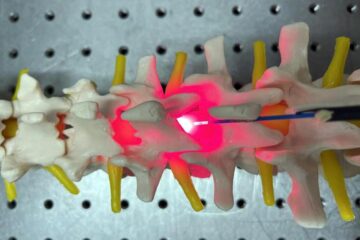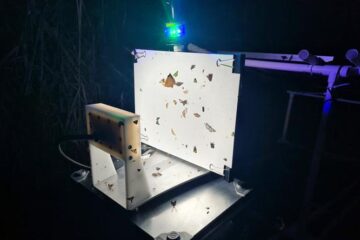Living with salt

Weizmann Institute scientists uncover a strategy that helps a plant-like, microscopic alga to happily proliferate in such inhospitable surroundings; their findings have unexpectedly shed light on the working of our own kidneys
Over the years, a number of Weizmann Institute scientists have addressed the question of how molecules essential to life, such as proteins, have adapted to function in extreme environments. The proteins they investigated were isolated from halophilic (salt-loving) microorganisms from the Dead Sea. After determining the 3-D structures for several halophilic proteins, researchers were able to explain how these proteins not only cope with high salinities, but are actually “addicted” to them. However, the alga Dunaliella salina is an organism of a different streak: it is able to grow in any salinity, from the extremes of the Dead Sea to nearly fresh water. The uniquely salt-tolerant Dunaliella, which is commercially grown as a source of natural beta carotene, has been investigated at the Weizmann Institute for over 30 years. Yet, the secrets of its exceptionally successful adaptation to salt remained unresolved.
In a recent paper published in the Proceedings of the National Academy of Sciences, USA (PNAS), Institute scientists Prof. Ada Zamir and Dr. Lakshmanane Premkumar of the Institute’s Biological Chemistry Department and Prof. Joel Sussman and Dr. Harry Greenblatt of the Structural Biology Department revealed the structural basis of a remarkably salt-tolerant Dunaliella enzyme, a carbonic anhydrase, which may hold the key. Comparisons with known carbon anhydrases from animal sources showed that the Dunaliella enzyme shares a basic plan with its distant relatives, but with a few obvious differences. The most striking of these is in the electrical charges on the proteins’ surfaces: Charges on the salt-tolerant enzyme are uniformly negative (though not as intensely negative as those in halophilic proteins), while the surfaces of carbonic anhydrases that don’t tolerate salt sport a negative/positive/ neutral mix. This and other unique structural features may enable the algal carbonic anhydrase to be active in the presence of salt, though not dependent on it. In a surprise twist, the researchers discovered that one other known carbonic anhydrase – found in mouse kidney – sported a similar, salt-tolerant construction. Pondering why a structure conferring salt tolerance should evolve once in a Dead Sea organism and once in a mouse has led the researchers to some new insights into kidney physiology. The researchers hope that the knowledge gleaned from their study of a tiny alga might provide the basis for designing new drugs that could target enzymes based on their salt tolerance.
Prof. Joel Sussman’s research is funded by the Helen and Milton A. Kimmelman Center for Biomolecular Structure and Assembly; the Joseph and Ceil Mazer Center for Structural Biology; the Charles A. Dana Foundation; the Divadol Foundation; the Jean and Jula Goldwurm Memorial Foundation; the late Sally Schnitzer, New York, NY; the Kalman and Ida Wolens Foundation; and the Wolfson Family Charitable Trust. Prof. Joel Sussman is the incumbent of the Morton and Gladys Pickman Chair in Structural Biology.
Media Contact
More Information:
http://www.jgordonassociates.comAll latest news from the category: Life Sciences and Chemistry
Articles and reports from the Life Sciences and chemistry area deal with applied and basic research into modern biology, chemistry and human medicine.
Valuable information can be found on a range of life sciences fields including bacteriology, biochemistry, bionics, bioinformatics, biophysics, biotechnology, genetics, geobotany, human biology, marine biology, microbiology, molecular biology, cellular biology, zoology, bioinorganic chemistry, microchemistry and environmental chemistry.
Newest articles

Red light therapy for repairing spinal cord injury passes milestone
Patients with spinal cord injury (SCI) could benefit from a future treatment to repair nerve connections using red and near-infrared light. The method, invented by scientists at the University of…

Insect research is revolutionized by technology
New technologies can revolutionise insect research and environmental monitoring. By using DNA, images, sounds and flight patterns analysed by AI, it’s possible to gain new insights into the world of…

X-ray satellite XMM-newton sees ‘space clover’ in a new light
Astronomers have discovered enormous circular radio features of unknown origin around some galaxies. Now, new observations of one dubbed the Cloverleaf suggest it was created by clashing groups of galaxies….





















